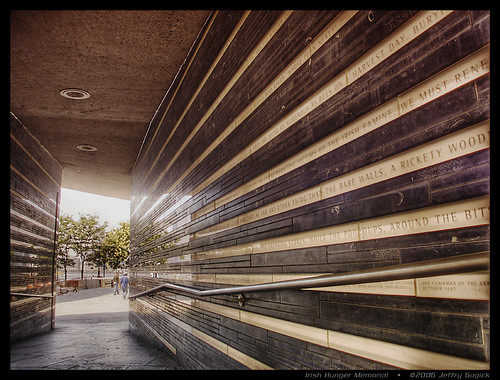Migration
From The Peopling of New York City: Irish Communities
Migration: First Wave | Second Wave | Irish Hunger Memorial
The Forgotten Era
When people think of Irish immigration in the United States, the first thing that comes to mind is the 19th century Second Wave of Irish immigrants that came to America due to devastating effects of the Famous Potato Blight of the mid 1840’s. What many people fail to recall is so called “forgotten era” of Irish-American history, or the First Wave of Irish Protestant and Catholic immigrants that started coming since the early 18th century. Until the 1840’s, as long as Protestants held the majority, Irish immigrants were simply classified as Irish. It was not until more Irish Catholics came in the second wave of immigration that the first wave wanted to separate from the newcomers and therefore they distinguished themselves as Scotch-Irish. Now, the term “Irish” is synonymous with Irish Catholic.
Irish Hunger Memorial
Located on North End Avenue and Vesey Street in Manhattan's very own Battery Park City lies a half-acre sized memorial constructed to raise public awareness of the events that led to the Great Irish Hunger and Migration of 1845-1852. Created by renowned sculptor and public artist Brian Tolle in 2002, this Irish Hunger Memorial consists of a rural Irish landscape with an abandoned stone cottage, stone walls, fallow potato fields and the flora on the north Connacht wetlands. It is both a metaphor for the Great Irish Famine and a reminder that hunger today is often the result of lack of access to land.

